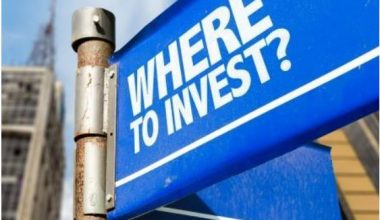Consumer sentiments have been rising in February 2022. During each of the three weeks that ended in the month, the Index of Consumer Sentiments (ICS) was higher than it was in any week since the last week of March 2020 when India first came under a severe lockdown because of the Covid-19 pandemic. With this record, February 2022 is heading towards registering the highest ICS since the lockdown.
This is hugely important because it implies the continuation of a trend of rising consumer sentiments that began in July 2021. A nearly sustained growth in the ICS over eight months implies momentum, which in turn implies sustained improvement in household sentiments.
There was a dip in the ICS in December and only a partial recovery in January. Now, partial data suggests that the recovery has continued into February and the ICS is likely to revert to what could have been its trend value for February, were it not for the December blip. Reversion to the rising trend in consumer sentiments is important because much of the economic recovery hinges upon it. Consumer sentiments reflect the views of the same constituency that shows up in the largest components of the GDP, private final consumption expenditure.
The ICS reflects the perception of consumers regarding their own well-being, prospects of their well-being in the near future, the health of the economic environment and also their propensity to spend on non-essentials. If the proportion of consumers who feel positive on these counts increases, the likelihood of the economy accelerating its recovery process also increases.
Consumer sentiment has been, by far, the most sluggish economic indicator in the post-lockdown recovery story so far. While most fast-frequency indicators charted a quick recovery from the devastating effects of the pandemic-induced lockdown, consumer sentiments showed no hurry. Sentiments were vulnerable to the first, second and third waves of the pandemic. It recovered from the second and third waves but these interruptions broke the momentum of what was a sluggish recovery. The ICS has still not recovered from the shock of the first wave.
The ICS is likely to end at over 62 in February 2022. The base of the index is 100 in September-December 2015. It had peaked at 110 in September 2019 and was at 105 just before the lockdowns, in February 2020. Thus, two years after the first lockdown shock, the ICS was still a good 41 percent below its corresponding pre-pandemic level. This shows how difficult it has been for consumers to believe in the rapid recovery demonstrated by all the fast-frequency indicators.
Now, consumers’ perceptions are turning around slowly but surely they are reflecting increasing confidence.
In the first three weeks of February 2022, 11.8 percent of the responding households said that their current household income was higher than it was in the year-ago period. A year ago, this proportion was only 5.1 percent. This proportion was in single-digits for 21 months from April 2020 through December 2021. It broke into double-digits in January when it touched 11.4 percent. February’s 11.8 percent average so far indicates a consolidation. The proportion went up to 12.6 percent in the latest week ended February 20, 2022. Perhaps, there is some momentum in the perceptions of households regarding their incomes. So, there is substantial improvement in households’ perception regarding their own incomes. But, India has a long way to go before it reaches the pre-pandemic proportion of optimistic households, which was 30.6 percent in February 2020. What is redeeming though is that it is headed in the direction and seems to have the momentum to continue.
More households are also optimistic regarding their future incomes. In the first three weeks of February 2022, nearly 11.5 percent of the households believed that their incomes would be higher in a year’s time. This was the first time since April 2020 that such a large proportion was optimistic of future income. During the pandemic period, such optimism was restricted to single digit proportion of households. But, before the pandemic, the proportion was much higher at about 30 percent.
There is a lot of ground to cover. Nevertheless, the ground covered in recent months is already reflected in households’ greater willingness to spend on non-essentials.
The impact of a greater proportion of households experiencing higher incomes and expecting higher incomes in the future was perceptible in the proportion of households that considered these to be good times to spend on non-essentials. In the first three weeks of February 2022, 9 percent of the households believed that this was a better time to buy consumer durables compared to a year ago. A year ago, only 4.9 percent of the households believed so. In April 2020, only 2 percent and in May 2020 only 1.25 percent believed it to be a better time to buy consumer durables. Compared to those dismal times, households’ confidence in spending on non-essentials has increased considerably. Of course, this is not as good as it was before the pandemic when usually about 27 percent of households considered it to be a good time to buy consumer durables.
The sustained increase in household propensity to buy consumer durables, or non-essentials, in recent months is perhaps the best sign of the economic recovery. A complete recovery, however, is still distant.
Article first published in Business Standard.






